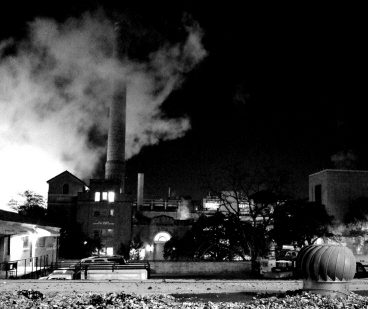
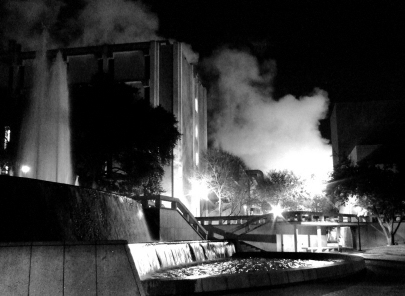
My first ACTLab project was a slide-show style presentation of various photographs set to music. At first I was inspired to make sort of a film-strip art piece by printing photos on transparency and looping it around in a Mobius Strip shape. I wanted to emphasize the idea that there was no beginning or end (and actually a Mobius Strip only has one side, as well), just as it is sometimes hard to tell when you have awoken from a dream and when you are still dreaming.
Considering more the presentation of the project and the feasibility of showing a piece that would have to be passed around, I opted to go for a digital version of the same idea, and hoped my photographic narrative would be cyclical enough to suggest that dream-loop. While brainstorming ideas for my narrative, a friend suggested I go take a walk and take my camera with me, so I did. I walked around the UT campus and took various paths I had never taken before. I took over 300 pictures of various buildings, alleys, courtyards, etc.
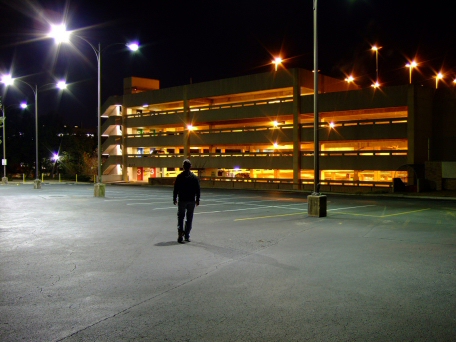
So I took this idea and ran with it, and developed a story about a guy (me) waking up in an unfamiliar place with no one around, and exploring this strange factory/laboratory-type environment, dealing with his lonliness in a place that shows every sign of use and activity, but never any actual human presence.
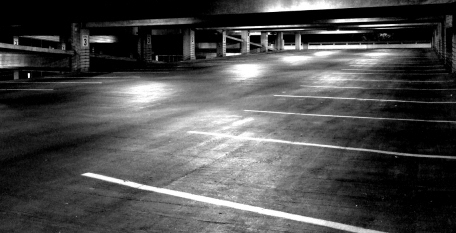
Over 110 digital photographs, each individually edited. I only used basic editing techniques (crop, contrast, brightness, greyscale) via JASC Paint Shop Pro 9. All of the photos were taken with my Fujifilm Finepix F30. This camera is great for low-light conditions, which suited the project well since most all of the shots were taken between 7pm and 3am. I set the camera to the "Night" and "Color" settings to get vibrant color in the dark, and I set the ISO to 100 and used a tripod to get clean, crisp shots. This setup worked well, and my only real difficulty was photographing myself (framing the shot, setting the timer, running off, standing still, running back, checking, doing it again...). It was interesting to see which doors were locked or unlocked at night and on the weekends, and no doubt I would have different shots had I wandered to different places.
After the slide show was compiled, I chose various songs from the Donnie Darko soundtrack since they had the strange industrial vibe I wanted. I wanted to fit Air's "Run" into the presentation, but it didn't match well with the other songs, so I placed it at the beginning, before the show, to play as I was setting up.


The slide-show stlye presentation was inspired by the film "La Jetee" we watched in class. It had many still photographs which flipped through as a single narrator read a story. The film appealed to me because it showed that a movie-like narrative could be told using still photographs just as (or perhaps even more) effectively than a motion picture.
Most of the photographs were taken at night because I really liked the lighting. The campus seemed to contain itself, to light itself, without any input from the outside, much like dreams are self-contained and don't necessarily take in interactions with the real world while you're sleeping.
The idea of making lighting an important aspect of this work came from my studies of Plato, and his suggestion that sunlight was the purest form of "truth" (or reality) in his allegory. Because I originally wanted to make a filmstrip of the photographs, I wanted pictures with good contrast so that there would be an interaction between the light in the room and the pictures the viewer is looking at. This would relate to the fact that dreams are often reflections of reality, and without light (without some "real" experience) there would be no picture to see. In my adaptation of this idea to a digital work, I chose to emphasize color as it would represent various shades and degrees of reality. As color is the absence of other colors in pure white light, it is the distillation of the complete spectrum. Similarly, colors in my photographs are meant to be shades of previous "real" experiences filtered through the mind into this dream narrative.
Some photographs are in color, some in black and white, and others a mixture of both (using layers - basically a selective greyscale). I did this both for aesthetic reasons, as well as a tribute to the cliche that some people always dream in black and white, and others dream in color. Personally, I have dreamt in both. As I was arranging the photographs in the order of my narrative, it just so happened that the black and white images clumped together and the colors images looked better next to each other. This represents waves of color and greyscale images, as if the dreamer faded in and out of color imagery (or in and out of reality, as one might interpret it).
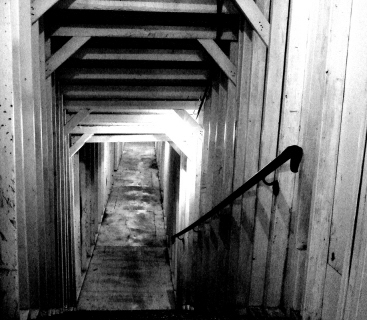
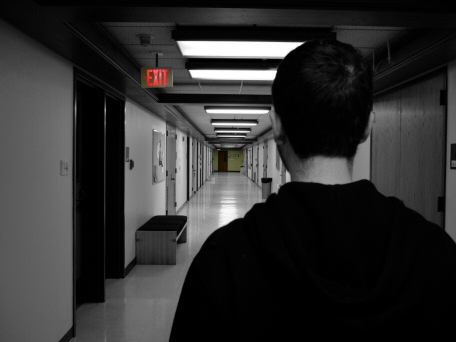
Just as some images are in color while others are greyscale, some images are extremely clear and crisp while others are grainy and have high contrast. This represents once again the range of dreams people can have. Some remember their dreams very clearly, while others have trouble recalling anything specific and instead can only remember a general feeling or a blurred image of a figure, etc. I also like the idea of "cold media" that suggests that something actually has more meaning when it isn't easily distinguished (such as a grainy black and white photograph) because the viewer is forced to interpret it and give it his or her own meaning.
I also tried to give some photographs an emphasis on texture, because I liked the idea of doing more than just seeing and hearing things in dreams, but also feeling, smelling, tasting, etc. It's rare that I use other senses besides my sight and hearing when I dream, but I wanted to at least try to give the sense to the viewer that dreams can actually have you touch things, and feel textures, as well. What would a blind person or a deaf person dream about? Certainly they'd have more emphasis on their other senses.
My narrative also begins rather suddenly, with many setting-establishing shots to show everyone had disappeared. This was intentional, and meant to imply that sometimes you are just "dropped" into a dream, with no lead-in or setup. You are just there, no explanation given. Not everything makes sense in a dream
